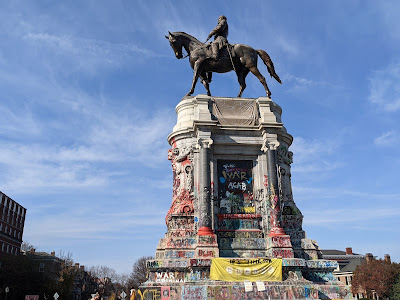Monday, September 27, 2021
Monday, September 6, 2021
TIE fighters are for coddled children with money
So, let's talk about Star Wars.
TIE fighter pilots have a reputation for being insane. This is well-earned; the TIE is famously powerful but famously fragile, little more than a couple guns strapped to some wings and a pair of engines, with not even enough hardware left for a life-support system. TIE pilots basically operate under the philosophy that if you're good enough to never get hit, you don't need shields. They're the elite of the Empire's sky power and they know it... Only 10% who enter the academy ever become pilots. Their craft even lack a hyperdrive, supported as they are by their operating bases and motherships.
They are coddled babies. They don't know the meaning of madness.
 |
| Look at these absolute children |
Consider: Sienar Fleet Systems fabricates TIEs by the tens of thousands. While they are, indeed, the lowest-bidder on an imperial contract, they've had thousands of opportunities to correct and perfect the design. Each obsidian, gleaming machine is the pinnacle of a mass-production process: perfectly engineered to specification, spare parts and supplies readily available, supported by the wealth and expertise of a galaxy-spanning empire.
No, if you want to see real madness, you look at an A-wing pilot.
 |
| "Fear is a luxury of the comfortable and the TIE pilot" |
Consider: in contrast to the legions of TIEs rolling off a Sienar assembly-line daily, A-wing pilots are helming a ship that fell off the back of a Kuat Systems delivery truck. Then it was grabbed by some freelancer engineer with a chip on their shoulder and maybe a certification on some planet and retro-fit with a hyperdrive and completely new engines and, hell, while we're in here, let's just rip out the astromech slot too, who can afford one of those? This is the souped-up back-alley Honda to the Empire's unending legion of mass-produced Fords. Every A-wing pilot is at least an amateur flight mechanic, because you need to be to keep the damn things in the sky. It may be spec'd superior to the TIE fighter, but all those pieces break down so often that there's never any guarantee an A-wing shows up to the fight without a couple guns and some expensive dead weight where a deflector array should be.
Then these absolute mad-lads-n-lasses get in their flying coffins and take on the biggest military power in the known universe, with only their rage at injustice and a pair of Borstel RG-9 laser cannons to wield.
 |
| "Mondays, am I right?" |
There is no long life here. There is no glory. There is the fight and its inevitable end. TIE pilots may have a death wish, but A-wing pilots know that wishes only come true if you put the work in. A-wing pilots have death plans. They have a death mortgage with a 2% return on investment, and they're interested in refinancing.
Also worth consideration:
- A-wings, unlike TIEs, have hyperdrives, because a malfunctioning hyperdrive is just one more exciting way to die in space.
- TIEs are shaped like jaunty accessory wear. A-wings are shaped like coffins.
- TIE flight school has a 90% washout rate. The Rebellion will hand a fighter to a farm-boy; their "flight school" is whether that farm-boy comes back.
- A-wings were originally designed for astromech assistance, but it was removed to make room for missiles. In lieu of an astromech, A-wing pilots just have half their thruster vectoring motors malfunctioning at any given time so they don't have to think about them.
- The TIE name, it is commonly known, stands for Twin Ion Engine. The A-wing is named after the sound the pilot makes when they're doing their job.
- A TIE fighter never took out Home One by crashing into its bridge
Mark's gallery of Facebook infractions 11, guest edition 3: won't someone think of the Congressional procedures?!
A ban for a friend.
This one is very similar to a ban I took earlier this year, which suggests to me that Facebook is over-constraining on keyword bans for "[violence-word] the [congress-word]". Understandable after January 6th, but someone could stand to bother to differentiate words for actual human beings in Congress from words for Parliamentary procedures.
Honestly, perhaps I should consider "Facebook cannot differentiate between people and things" to be more disquieting than I currently do.
Sunday, September 5, 2021
Sword in the Stone is bad and my favorite Disney movie
I think my favorite Disney movie has terrible structure, but I love it for being a unique artifact.
 |
| Behold, the ideal make hero. You may not like it, but this is what peak narrative looks like |
Disney movies lean heavily into the monomyth of the hero's journey. With very few exceptions, we follow a protagonist (often a princess) who finds a call to action, leaves home, faces trials and an abyss, grows to overcome these things, and finds their way home, permanently changed. Cinderella with her ball, Ariel with her legs and the affection of the man she fell in love with, Flynn and the truth ENCOM buried... They're all brought on a magical journey to attain the unattainable, to overcome the impossible, and to seek their heart's reward.
And then... There's Wart.
 |
| Our uh, hero, ladies and gentlemen? |
As heroes go, Arthur from The Sword in the Stone is... Tough. He barely fits the model. This has much to do with the source material... Sword in the Stone is based on T. H. White's "Once and Future King," which tells the rest of Arthur's tale in the rest of the book. But Sword in the Stone chronicles only the tale from Arthur meeting Merlin to Arthur becoming king as a result of pulling an inextricable sword from the stone and anvil in London.
Arthur's path through the story has parts of a hero's journey. There's a call to action, sort of (he meets Merlin, who tells him Arthur's now his student). He leaves the threshold by, uh, going home with a wizard in tow. He does undergo several trials (chased around by a fish, chased around by a squirrel, chased around by a hawk). And he stands up to his father-figure in Sir Ector, which costs him his squirehood... For a time, until fate intervenes to take out Hobbes off-screen (a character we never meet). He faces the abyss by... doing the thing he was training to do, which is become a squire. This so infuriates Merlin that Merlin leaves, whereupon Arthur goes to London, accidentally finds a magic sword, and becomes king. He never wanted to be king, so he begs his mentor to return, and Merlin does, in a blast of magic and Bermuda shorts. And we close there, with Arthur now the once and future king and Merlin his mentor.
It's a weird story because Arthur spends most of it along for the ride. He transitions from student to squire to king without seeking any of these... The world is happening to him. He's fated to be who he will be, and nothing he wants can stop it. He's the protagonist, but he's not really the hero of the story. In fact, he's more of a McGuffin if anything. He's not even the first character we see in the tale. In fact, the first character is...
 |
| Oh no. Oh no no no no no no. |
Merlin... Merlin does want things. We establish what he wants in the first scene, where he wrestles a well for gravitational supremacy. He wants a world better than the one he's living in. And he knows it's possible, because he has foreseen it. Merlin is "a soothsayer... A prognosticator." He has the gift of foreknowledge of (and apparently, we eventually learn, access to) the future past the medieval world he's living in, where everything is "complicated" and the strong prey upon the weak. In many versions of the tale of Arthur, Merlin's foreknowledge is a curse, not a blessing, and we seem to play it as such here... He is forever grumpy and dissatisfied, knowing of a world that is not and could be, if only people weren't so... Medieval.
And Merlin is also burdened with a purpose. He knows Arthur is coming his way, and he is to guide the boy to "his rightful place in the world" (put a pin in that; we'll return to it). Whereas Arthur's variant of the hero's journey starts with him going home, Merlin accepts the call to action by packing his whole home into a suitcase and moving into a drafty, leaky tower to do his work.
We have trials, where Merlin faces not whether his power is sufficient to protect his ward, but whether he's imparted enough knowledge for Wart to save himself. Except when young Arthur becomes faced with a threat he can't face himself, a sorceress of equal power to Merlin. At which point, Merlin blows in as a literal force of nature to stand between the boy and mortal peril (Hero, from the Greek ἥρως. Meaning "protector," "defender"). He puts his life on the line to save this kid from certain doom, and does so in a way that still teaches a lesson, for teaching is his role in this boy's life.
 |
| The guy that faces this might be the hero of the story, is what I'm saying. |
After these adventures and trials, Merlin faces the abyss by... His student becoming a squire.
 |
| "Good news! I'm gonna clean armor 'til I die of plague!" |
Donning the "fine monkey suit for polishing boots." Embracing the identity imposed upon him by the medieval world. Merlin challenges his decision, and Wart's response... "I'm lucky to be Kay's squire. I'm nobody."
After all that work. All that tutelage. Fighting the most dangerous sorceress in the kingdom.
"I'm nobody."
Merlin doesn't take it well.
 |
| When you need some me-time but also you're a wizard |
 |
| These are his thinking shorts. He wears them for thinking. |
He takes up a position advising Arthur, roll credits.
Arthur... Is a fixed point in time. Nothing Merlin does actually pushes him towards this "rightful place in the world;" had Merlin not intervened, Arthur would have been Kay's squire, likely would have screwed up bringing Kay's sword, and gone to the churchyard for the sword in the stone anyway. Fate is making him king... Will make him king. Unavoidably. Inexorably. Once and future.
I think Merlin knows this. Merlin can do nothing to change this. Merlin can't change whether he's king. What Merlin can do, the only thing he can do, is shape him into King Arthur. Prepare him. Make this boy, so ill-equipped to lead a nation, into a leader. Raise a wise man from a child. Share a vision of a slightly brighter tomorrow, so that his choices and his leadership might guide his people towards it, even stumblingly, imperfectly, partially. He might not bring them indoor plumbing or electricity, but perhaps it's in the power of a King Arthur to create a kingdom where the strong do not prey upon the weak. Better than the kingdom he was raised in.
Imagine you knew, beyond a shadow of a doubt, that some random kid would become President. You had no control over this aspect of fate; that is a fixed point, unchanging. What would you do? You'd help him become the best damn kid he could be, that he may become the best President he can be.
Among the people cared for by teachers now, someone will be the next President. Someone will become CEO of every corporation that will exist. Someone will become a Supreme Court Justice. A general. A priest shepherding thousands or tens of thousands. The mayor of a city where millions live. This is guaranteed. As long as we have humanity, we will demand leaders; as long as we have this society, we will have these kinds of leaders. We can't stop this. But what we can do is our best to ensure that all of these will become the best human beings we can possibly help them be.
I love The Sword in the Stone because the hero is the teacher. I want more of those stories.
Thursday, September 2, 2021
No, you cannot force the city to keep up your racist monument because we said in 1890 that we'd be racist forever
Given that I'm currently cooling my heels in Zuck jail for suggesting that there is no quantity of statues that exceeds the value of one human life, this ruling feels like a tiny bit of vindication.
NPR reports "The Supreme Court of Virginia ruled Thursday that the state can take down an enormous statue of Confederate Gen. Robert E. Lee that has towered over a traffic island in Richmond for more than a century and has become a symbol of racial injustice." This decision had been blocked by injunctions related to two court cases. Today, the state Supreme Court tossed both cases for lack of standing, lifting the injunction.
Individual rulings from the state court:
- Gregory v. Northam—"The granting instruments relied upon by Gregory, the 1887 Deed and the 1890 Deed, do not plainly state an intent to create an easement in gross, and the circuit court did not err in concluding that they do not do so... Thus, Gregory has no property right, related to the Lee Monument, to enforce against the Commonwealth."
- Taylor v. Northam—"The Taylor Plaintiffs’ claims are based upon two premises... Second, that the Governor is constitutionally prohibited from ordering the removal of the Lee Monument from the Circle because a joint resolution passed by the General Assembly in 1889 states the Commonwealth’s current public policy and it strips the Governor of his authority to have the Lee Monument moved from the Circle. Rightfully, neither premise survived the circuit court’s scrutiny... We conclude that there is sufficient evidence to support the circuit court’s ruling that the purported restrictive covenants are unenforceable, even without considering the 2020 Budget Amendment, and that the terms of the 1889 Joint Resolution are not binding on the current Governor and did not strip the Governor of his authority to order the removal of the Lee Monument from the Circle."
The tl;dr is that the ground was deeded to a private association to build the statue in 1887, and then donated the land to the Commonwealth of Virginia in 1890 (because, obviously... Better to have state tax money pay for it than pay taxes to the state for maintaining the statue privately). The Court has correctly recognized that there is no takesies-backsies on that grant one-hundred-thirty years later when the state decides the circle would be better used for something other than a giant monument to the general who fought tooth-and-claw for the right of people to own other people. Nor can a resolution under which property was transferred to the Commonwealth 130 years ago constrain the actions of the Commonwealth with that property in the present. Furthermore, statues are speech, and a 130-year-old covenant cannot constrain the speech authority of the modern government.
This is, I think, one of the most interesting parts of these cases: that plaintiffs only recourse for any standing whatsoever is something the government said 130 years ago, when none of the plaintiffs were even alive. This is a situation where the oft-misquoted wisdom of Benjamin Franklin nearly applies: "Those who would give up essential Liberty, to purchase a little temporary [free statue], deserve neither Liberty nor [a free statue]." The Court rightly recognizes that it isn't even within the power of the state government to constrain its own freedom of expression in perpetuity; no government of the Commonwealth can guarantee that a future government of the Commonwealth won't tear down any statue it owns.
We don't build monuments for the dead. We build them for the living. This one has outlived its usefulness, and the state Court agrees.
I lost faith in the government process in Virginia decades ago and never expected to see this day. It feels good to be this wrong.




